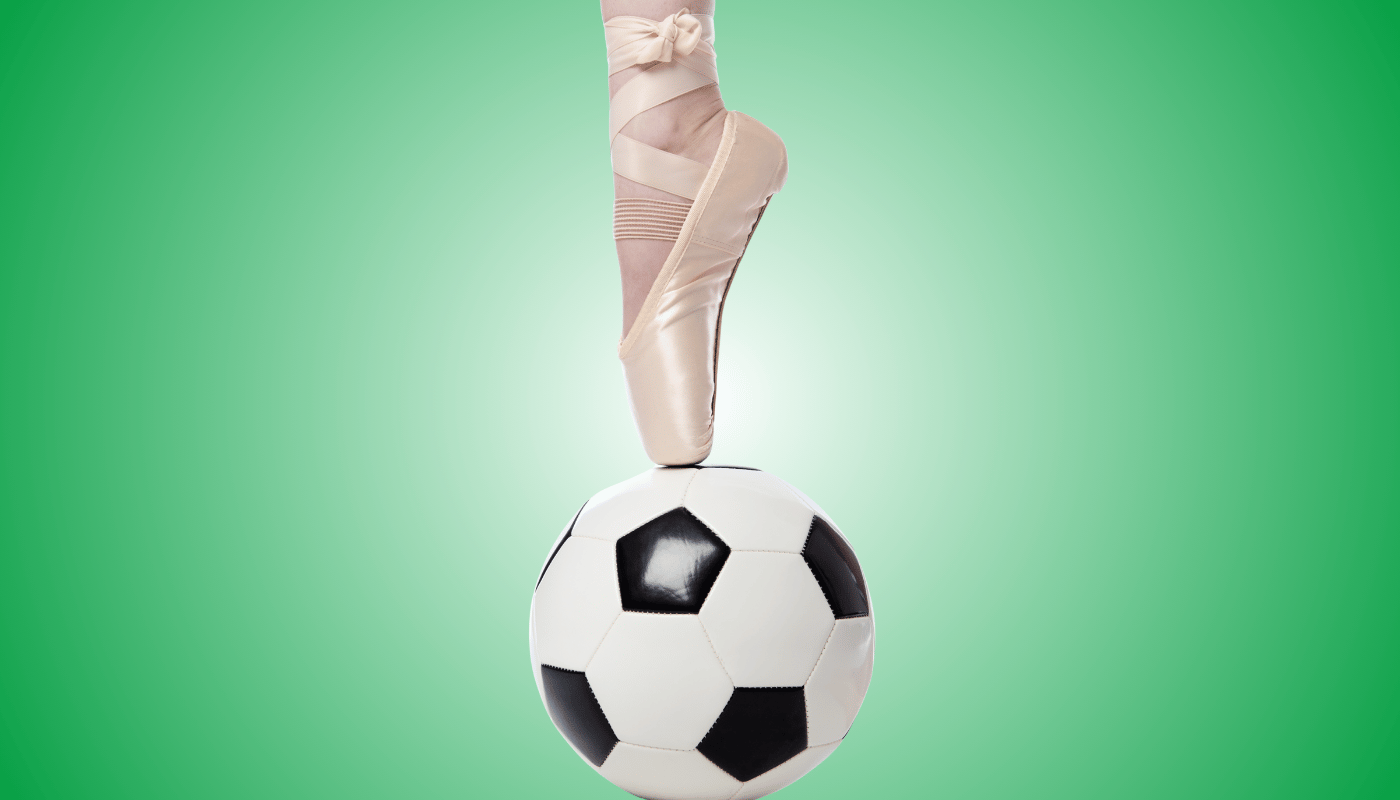The relationship between football and ballet might seem unlikely, but the reality is that a significant number of professional football players incorporate ballet into their training regimen. This unique blend of physical disciplines can provide unexpected benefits for these athletes, from improved flexibility and balance to enhanced coordination and body control.
The Benefits of Ballet Training for Football Players
Ballet is often perceived as a delicate and feminine art form, but its demanding physical requirements can actually complement the intense demands of football. Ballet training focuses on developing core strength, flexibility, and body awareness – all of which are crucial skills for football players.
Improved Flexibility and Range of Motion
One of the primary benefits of ballet training for football players is the improvement in flexibility and range of motion. Ballet emphasizes the importance of proper body alignment and the use of muscles throughout the full range of motion. This can help football players become more agile and reduce the risk of injury by improving their overall mobility.
Enhanced Balance and Coordination
Ballet requires exceptional balance and coordination, as dancers must maintain control of their bodies while executing intricate movements. This focus on balance and coordination can translate directly to the football field, where players need to quickly change direction, react to shifting dynamics, and maintain stability under pressure.
Increased Core Strength and Stability
The core-strengthening exercises inherent in ballet training can be incredibly beneficial for football players. A strong core provides a solid foundation for explosive movements, improved posture, and better overall body control – all of which are essential for success on the football field.
Mental Focus and Discipline
In addition to the physical benefits, ballet training can also have a positive impact on the mental aspects of football. The focus, discipline, and attention to detail required in ballet can help football players develop greater focus, mental toughness, and the ability to maintain composure under pressure.
The Crossover of Football and Ballet
While the connection between football and ballet may not be immediately apparent, there is a long history of elite football players incorporating ballet into their training routines.
Notable Football Players Who Have Studied Ballet
Several high-profile football players have openly discussed the benefits of ballet training and have incorporated it into their overall fitness regimen. The table below highlights some of these athletes:
| Player Name | Position | Ballet Contribution |
| Jerry Rice | Wide Receiver | Improved footwork and agility |
| Odell Beckham Jr. | Wide Receiver | Enhanced balance and body control |
| Cam Newton | Quarterback | Increased flexibility and core strength |
| Russell Wilson | Quarterback | Better coordination and mental focus |
| Julian Edelman | Wide Receiver | Advanced body awareness and injury prevention |
The Influence of Ballet on Football Technique
The graceful movements and body control developed through ballet can have a significant impact on a football player’s technique. Improved footwork, balance, and body awareness can enhance a player’s ability to make quick cuts, evade defenders, and maintain control of the ball.
The Intersection of Athleticism and Artistry
Football and ballet, while seemingly disparate, share a common thread of athleticism and artistry. Both disciplines require a mastery of the human body, an understanding of biomechanics, and a dedication to perfecting complex movements. This intersection of physical prowess and artistic expression can create a unique and captivating blend of performance on the field.
The Percentage of Football Players Who Take Ballet
While the exact percentage of football players who incorporate ballet into their training is not widely reported, it is clear that the practice is becoming more commonplace. Anecdotal evidence and interviews with players and coaches suggest that a significant number of professional and collegiate football players are exploring the benefits of ballet.
Factors Influencing the Adoption of Ballet in Football
The increasing acceptance and integration of ballet in football can be attributed to several factors:
- Recognition of Physical and Mental Benefits: Understanding how ballet enhances flexibility, balance, and mental focus.
- Emphasis on Injury Prevention: Ballet’s role in improving mobility and reducing injury risks.
- Influence of High-Profile Players: Prominent athletes advocating for ballet training.
- Innovative Coaching Methods: Coaches and trainers seeking new ways to enhance player performance.
Potential Challenges and Stigmas
Despite the growing acceptance of ballet in the football community, there may still be some lingering stigmas or misconceptions about the practice. Some players or coaches may be hesitant to incorporate ballet due to concerns about perceived masculinity or the potential for ridicule from peers.
Conclusion
The relationship between football and ballet may seem unlikely, but the reality is that a significant number of professional football players are incorporating ballet into their training routines. The physical and mental benefits of ballet training, from improved flexibility and balance to enhanced core strength and mental focus, can provide a valuable complement to the demands of football.
As the benefits of this unique crossover become more widely recognized, it is likely that the integration of ballet in the football community will continue to grow. By embracing the intersection of athleticism and artistry, football players can unlock new levels of performance and push the boundaries of what is possible on the field.

With over six years of experience in the betting industry, Alex shares valuable insights, tips, and strategies to help bettors make informed decisions. He is dedicated to exploring the latest betting applications and providing thorough reviews to enhance the user experience. When not analyzing stats or watching matches, Alex enjoys engaging with the football community and discussing the latest trends in sports betting.

